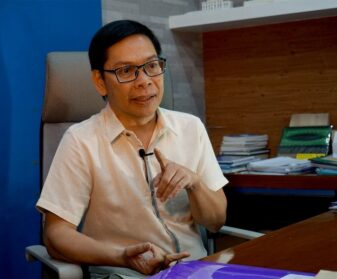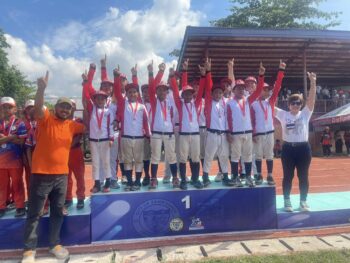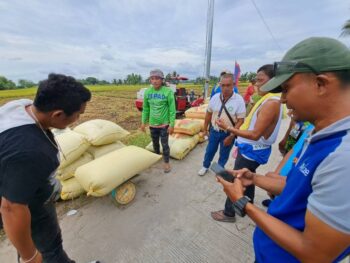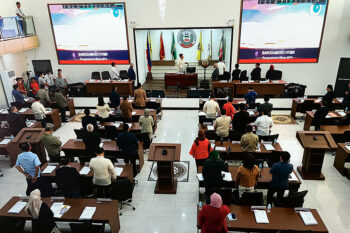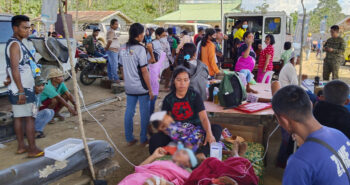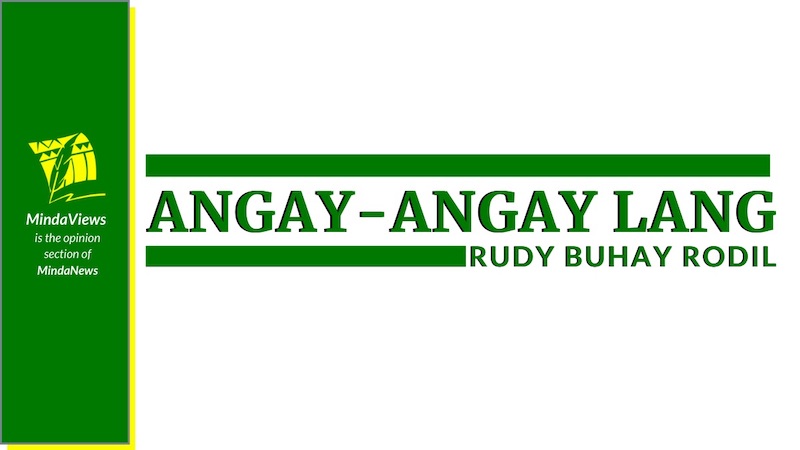
15th of 18 parts
Part XV
SPCPD: Transitional Structure and Mechanism
It took nearly two months to conceptualize and formulate a transitional structure and mechanism. Finally, when the GRP came up with SPCPD and the MNLF accepted it during the Eighth Mixed Committee meeting in Davao City in June 1996, there was a big sigh of relief. But when it leaked to the media and was met with a spontaneous “hail of fire”, as it were, from the people who could not identify with it or felt violated by it, both politicians and general population, a new front was opened at the level of the people, the religious leaders and the politicians. It can be said that the population was obviously divided: the Muslims overwhelmingly for it and the Christians against. Even bishops and other church dignitaries who earlier approved of it had to change their tone for fear of being alienated from their own flock.
The controversy was so widespread, Senate felt compelled to constitute itself into a Committee of the Whole and conducted the most extensive public hearing on the issue, in the cities of Marawi, Iligan, Cotabato, Davao, Zamboanga. Later, it issued Resolution No. 50 giving its blessings to the talks, albeit with some reservations.
Evolution of SPCPD
How SPCPD came into existence was an interesting story in itself. Alexander Aguirre, GRP chair of the Ad Hoc Working Group on Implementing Structures and Mechanism was chiefly responsible for formulating such a mechanism.
Aguirre was himself a retired general of the Armed Forces. He was Undersecretary of the Department of Interior and Local Government when he was appointed to head two committees, the Support Committee on Administrative System, Representation in National Government, Legislative Assembly and Executive Council, and the Ad Hoc Working Group. He was already the head of the Presidential Management Staff with the rank of secretary by the time the SPCPD was formulated and finalized.
The position papers on the implementing structures were submitted by both sides in November 1994 in Zamboanga City. Real deliberations did not begin until June 1995 in Davao City. The meeting in Davao did not lead to any breakthrough, but it clearly indicated that the positions of the GRP and the MNLF were irreconcilable.
The MNLF wanted the establishment of the provisional government without a plebiscite in accordance, they said, with Par. 15 of the Tripoli Agreement. Par. 15 states: “Immediately after the signature of the Agreement in Manila, a Provisional Government shall be established in the areas of the autonomy to be appointed by the President of the Philippines; and be charged with the task of preparing for the elections of the Legislative Assembly in the territories of the Autonomy; and administer the areas in accordance with the provisions of this agreement until a Government is formed by the elected Legislative Assembly.” They were very emphatic in their absolute rejection of anybody that would be subjected to a plebiscite.
The GRP replied that the only time that the President could appoint said Provisional Government was in the time of President Marcos who had Presidential Decree powers, and in the administration of President Aquino who exercised legislative functions under the Revolutionary Constitution, but only until July 31, 1987. President Ramos did not have such a power under the 1987 Constitution.
So, the GRP’s proposed that a transition mechanism, if it must serve the function of a provisional government, could only be made possible by an act of Congress. It should also be in conjunction with the end of the term of ARMM in March 1996. This law must be subject to a plebiscite.
During the Mixed Committee meeting in March 1996 in Zamboanga City, the GRP panel did not have an alternative transition mechanism to offer. Hence the impasse. It was the shortest Mixed Committee meeting in those 37 months of the peace process.
Secretary Aguirre conducted intensive and extensive research and consultation in a period of about a month and a half. Eventually it dawned on him that the transition mechanism emanating from Congress would indeed be a provisional government but it would automatically trigger a plebiscite; there was no question about it. A body created by the Office of the President would not be a provisional government but it would also not require plebiscite.
Congressman Simeon Datumanong, one of the Advisers of the GRP Panel, did his own research and came up with his own proposal. He also discussed his concept with Muslimen Sema when they happened to sit together in a plane from Cotabato to Manila. Sema in turn presented the idea to Misuari. The same proposal reached the President, the GRP Panel and Aguirre. Aguirre commented that his own ideas and those of Datumanong jibed quite well.
By May 20, the broad details of the Southern Philippines Council for Peace and Development was born. But the question was would Misuari accept it? What President Ramos did was to send his Executive Secretary Ruben Torres to meet with Misuari in a hotel in Dubai. At the end of three days, Torres telephoned the President to inform him that Misuari consented to discuss the SPCPD. The President in turn instructed the GRP Panel to make a formal presentation of the SPCPD to the OIC Committee of the Six. The GRP delegation patiently explained that this was the best option that the Philippine Government could offer under the Constitution. The Committee of the Six met separately with the GRP Panel and the MNLF group. Then at the plenary session, the MNLF agreed to discuss the details of the SPCPD in Davao City. The rest is history.
With their acceptance of SPCPD as transition mechanism, the MNLF made major compromises: they dropped their demand for a provisional government, and accepted the holding of a plebiscite to determine the coverage of the new area of autonomy.
Governorship of ARMM
Not part of the negotiation proper but still very much a part of the peace process, the leadership of Lakas, the ruling political party at the time, offered the candidacy of ARMM to Nur Misuari with a promise of full party support during the ARMM election. He accepted. In effect, this would mean that Misuari or his representative would be governor of ARMM at the same time that he was the head of SPCPD. ARMM would provide the MNLF with the “provisional government” that they wanted so much, and SPCPD would be the mechanism to enable them to make their presence felt in the rest of the 14 provinces and nine cities outside of the ARMM. Misuari duly filed his candidacy and won.
What to do with the MNLF Mujahideen?
The last issue which has been for three years one of the most contentious was what to do with the MNLF armed mujahideen. There were certain quarters in the AFP who insisted that settlement meant the MNLF must agree to lay down their firearms because there was no more need for them. For their part, the MNLF would not countenance the very thought of it because, if they surrendered their firearms, there was no way they could still face their people afterwards. That would have been the ultimate humiliation. It was resolved at 2:30 in the morning of the day of initialing, or two and a half hours before the agreed deadline: 7,500 MNLF members would be integrated into the AFP and the PNP 5,750 into the AFP and 1,750 into the PNP. There would be no laying down of firearms.
The Peace Agreement
On the bright and sunny morning of September 2, 1996, 21 years and nine months after the Jeddah Talks in 1975, the Peace Agreement was signed at Malacañang. The first line of the document was aptly described as “the final agreement on the implementation of the 1976 TripoIi Agreement between the Government of the Republic of the Philippines (GRP) and the Moro National Liberation Front (MNLF) with the participation of the Organization of Islamic Conference Ministerial Committee of Six and the Secretary General of the Organization of Islamic Conference.” Technically, this ended the chapter on the peace process.
But this was not the end of the story. The Peace Agreement laid down future tasks that should be put in place to ensure that peace will come to stay, be nurtured and beget more peace.
The Agreement was divided into two phases (See Appendix E for the Implementing Structure and Mechanism of this Agreement). Phase 1 covered a three (3) year period during which the President would issue Executive Order establishing the Special Zone of Peace and Development (SZOPAD), the Southern Philippine Council for Peace and Development (SPCPD), and the Consultative Assembly. He would also issue the necessary instructions to initiate the process of the joining in of MNLF elements with the Armed Forces of the Philippines and into the Philippine National Police.
In Phase 2 Congress shall initiate and complete the legislative process that would repeal or amend the Organic Act (RA 6734) of the Autonomous Region in Muslim Mindanaw (ARMM), ensuring that the points of consensus would be integrated into the law. Then the law shall be submitted to the people of the concerned areas in a plebiscite to determine the establishment of a new autonomous government and its territory.
Misuari as Negotiator
At close range, how do we see Chairman Nur Misuari as peace negotiator? In those 37 months of negotiation, it can be said with a very high degree of accuracy that he almost single-handedly took on the entire GRP panel. During the Four Rounds of formal talks in Jakarta, during the nine Mixed Committee meetings, and in all the meetings of the Ad Hoc Working Group, he brilliantly and vigorously argued the case of the Bangsamoro, never stopping until he obtained the maximum terms from the GRP panel. Where did he draw his superhuman energy to accomplish what he did? We have no idea. He has video tapes to show this.
It is to his credit, and to those of his entire delegation, that they grasped the reasonability of the offer of the GRP, more specifically, the SPCPD as transition mechanism, and the integration of 1,750 and 5,750 mujahideen into the PNP and AFP, respectively. These were the two most contentious points in the negotiations. The President through the GRP panel and Ruben Torres, his Executive Secretary diplomatically transmitted the message that this was the best offer the government could give under the given circumstances, and they understood.
It should be recalled that the OIC, through its Resolution No. 18 in the Fifth Islamic Conference in 1974 urged the Philippine Government “to find a political and peaceful solution through negotiation with Muslim leaders, particularly with the representative of the Moro National Liberation in order to arrive at a just solution to the plight of the Filipino Muslims within the framework of the national sovereignty and territorial integrity of the Philippines.” Subscribing to this, the Tripoli Agreement, not only reiterated this particular item in Par. 1 which states “the establishment of Autonomy in the Southern Philippines within the realm of the sovereignty and territorial integrity of the Republic of the Philippines.” Par. 16 emphasizes that the Government of the Philippines “shall take all necessary constitutional processes for the implementation of the entire Agreement.”
The agenda of the formal peace talks was the full implementation of the Tripoli Agreement in letter and spirit and, to our mind, this is exactly what happened.
In sum …
Altogether, there were two exploratory meetings in Tripoli and Cipanas, West Java, respectively; four Rounds of formal peace talks in Jakarta; nine Mixed Committee meetings in Jolo, Zamboanga City, Davao City, General Santos and Jakarta, more than fifty Support Committee meetings, and countless caucuses and back channeling and/or backroom consultations in Jolo, Zamboanga, Dipolog, Cotabato City, Marawi City, Davao, Puerto Princesa, Metro Manila and the Middle East.
The formal peace negotiations directly involved the biggest number of people in both panels. During the first round, the GRP delegation was lean, consisting of 19 persons, 13 from the Philippines and five from the Philippine Embassy in Jakarta. The MNLF had 24 coming from the Middle East and the Philippines. With the creation of the Support Committees, delegations on both sides grew progressively. During the fourth and last round, the GRP delegation rose to 53, while the MNLF ballooned to 162. The numbers included a number of concerned observers on both sides.
The signing ceremonies at Malacañang formally ended the state of war that reigned for 24 years between the Government and the MNLF. It also signaled the beginning of a new journey in the peace process.
(MindaViews is the opinion section of MindaNews. A peace specialist, Rudy Buhay Rodil is an active Mindanao historian and peace advocate)
TOMORROW: It is time for new relationships

